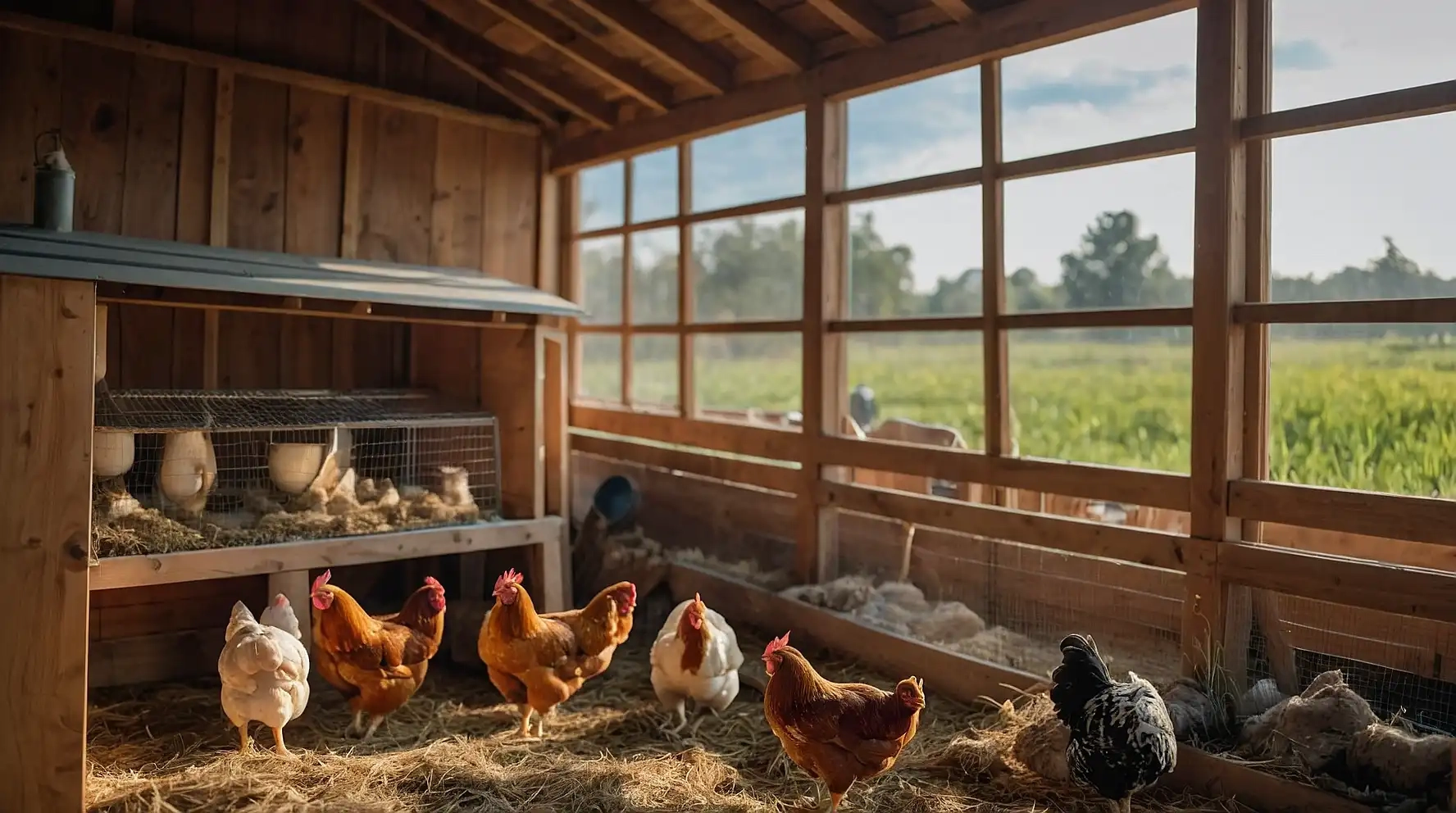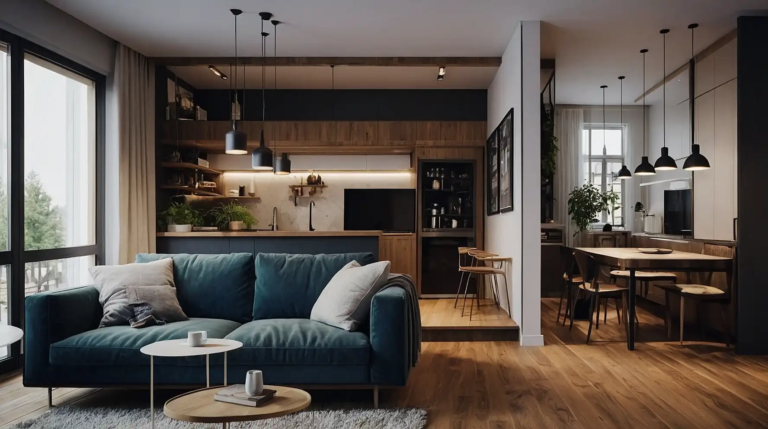21 Innovative Chicken Coop Interior Designs for Happier, Healthier Hens
Creating the perfect chicken coop interior directly impacts your flock’s health, egg production, and overall happiness.
Well-designed coops reduce maintenance time while providing your chickens with a clean, comfortable environment that meets their natural behaviors and needs.
Modern coop designs now incorporate clever features that make daily care easier for you and living conditions better for your birds.
Smart interior layouts address ventilation, predator protection, and accessibility while maintaining a clean, functional space.
With thoughtful planning, your chicken coop can become an efficient, practical space that keeps your flock thriving in all seasons.
Here are 21 innovative interior chicken coop designs that combine functionality with comfort for your feathered friends.
1: Removable Droppings Tray

Install a sliding tray beneath roosts to catch overnight droppings.
This simple addition makes daily cleaning quick and efficient without disturbing your birds or dismantling coop features.
The removable design allows you to slide out, dump, and clean the tray in minutes.
Choose corrosion-resistant materials like galvanized metal or plastic trays that withstand frequent cleaning and disinfection.
2: Vertical Wall-Mounted Nesting Boxes
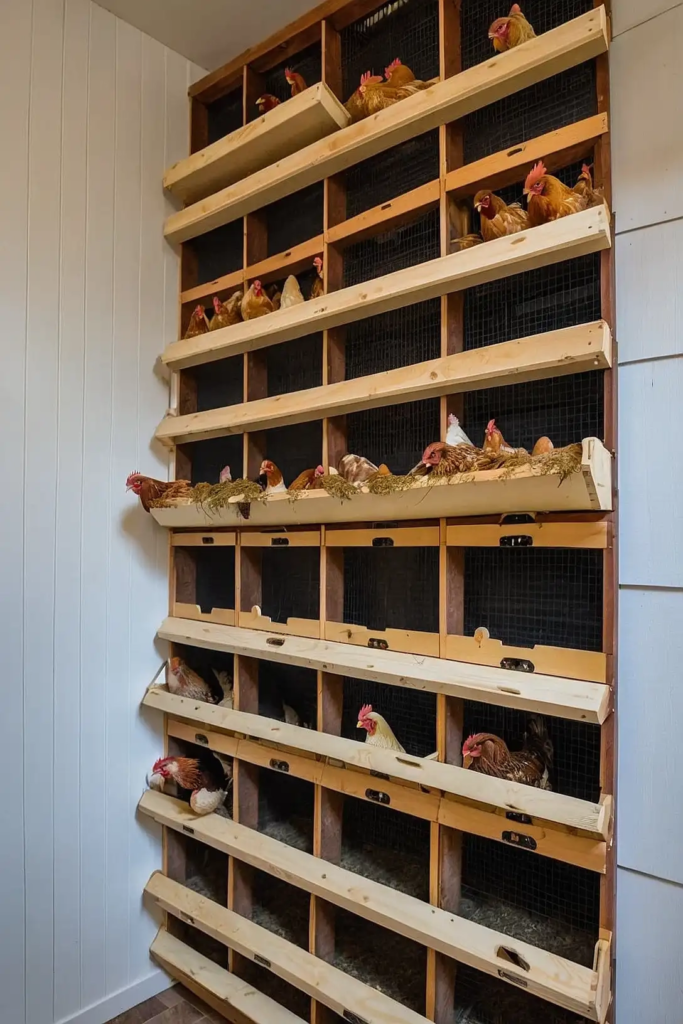
Mount nesting boxes on the wall to free up valuable floor space for scratching and dust bathing.
This space-saving design keeps eggs clean while giving hens the privacy they prefer for laying.
Position boxes at a comfortable height for your chickens but lower than roosting bars.
Add a hinged roof that opens from outside the coop for easy egg collection without entering the coop itself.
3: Solar-Powered Lighting System
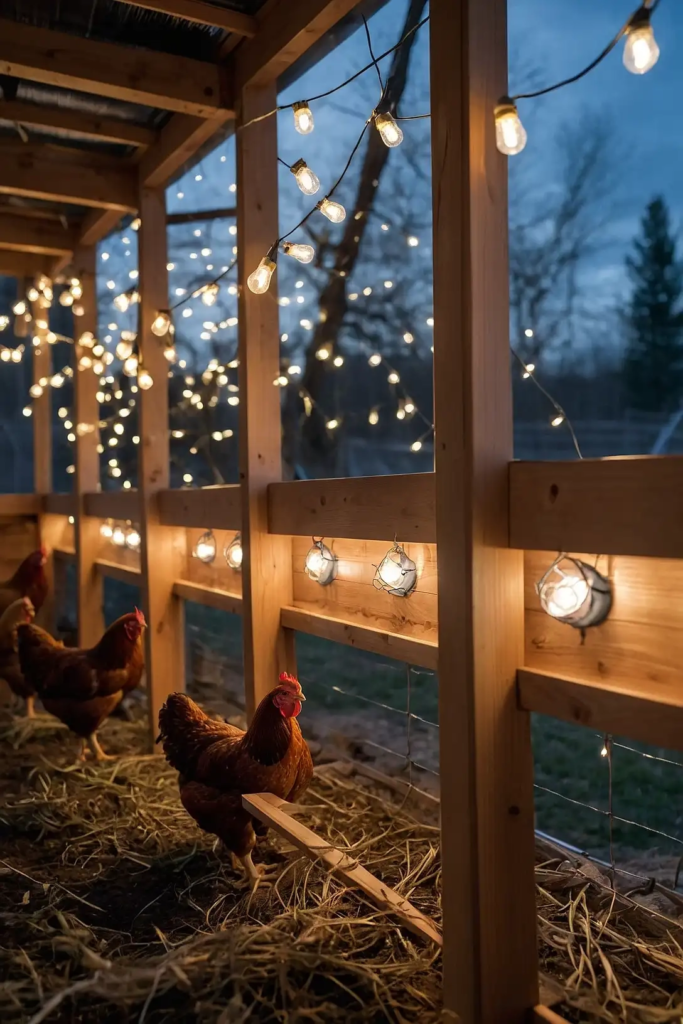
Install simple solar-powered LED lighting to extend winter daylight hours and boost egg production.
This sustainable solution works even in remote locations without requiring complex electrical wiring.
Program timers to maintain a consistent 14-16 hour “day” throughout the year.
Choose warm spectrum lighting rather than cool white bulbs that might stress your birds or disrupt their natural behaviors.
4: Dutch Door Access Design
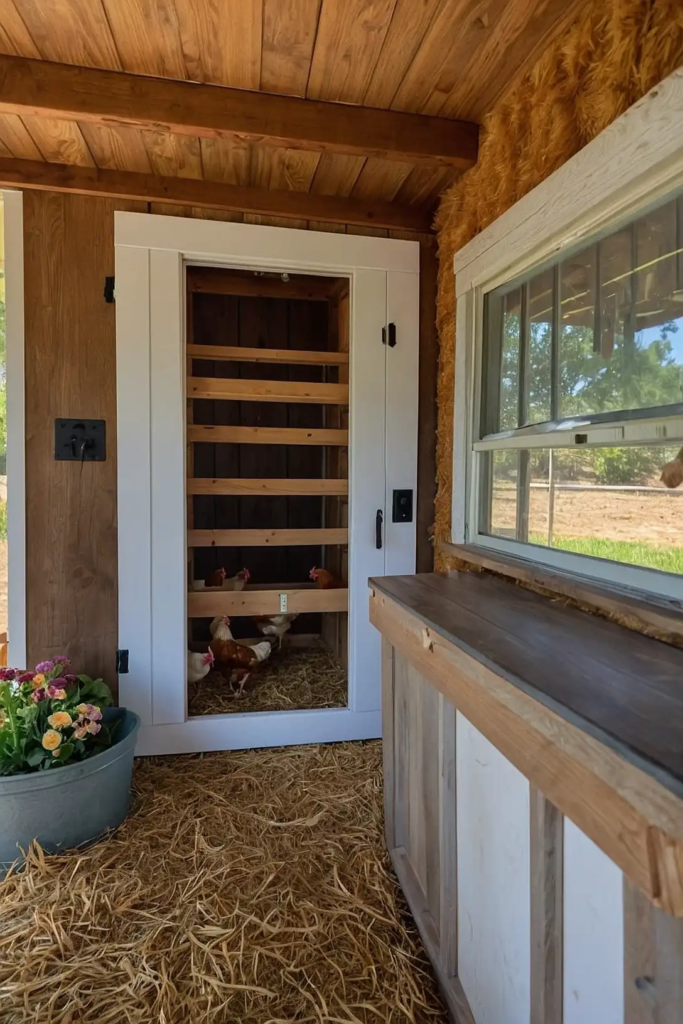
Divide your coop door horizontally into two independently opening sections.
This versatile setup allows upper-door ventilation while keeping chickens contained, or easy access for cleaning without full door swings.
The flexible design provides excellent control over airflow in changing weather conditions.
Add secure latches to both sections for protection against clever predators that can manipulate simple closures.
5: Deep Litter Floor System
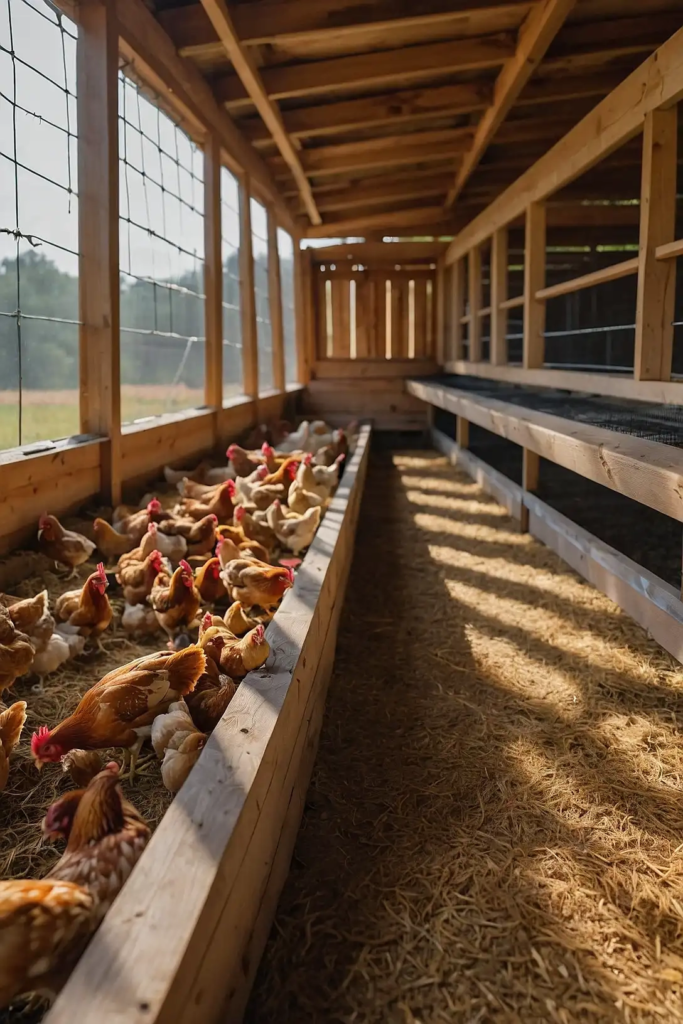
Design a deep litter system with 8-12 inches of bedding that composts in place.
This traditional method reduces cleaning frequency while creating beneficial heat during decomposition in colder months.
The composting bedding neutralizes odors and creates healthier coop conditions.
Use pine shavings or mixed materials, adding fresh layers on top while allowing lower layers to break down naturally.
6: Modular Roost Bars

Install removable roosting bars that you can easily take out for thorough cleaning and parasite control.
This practical design accommodates different chicken breeds and growing flocks with adjustable heights and positions.
Position roosts higher than nesting boxes to prevent sleeping in laying areas.
Choose rounded wooden dowels 2-3 inches in diameter that allow chickens to comfortably grip while covering their feet with feathers when sleeping.
7: Interior Dust Bath Station
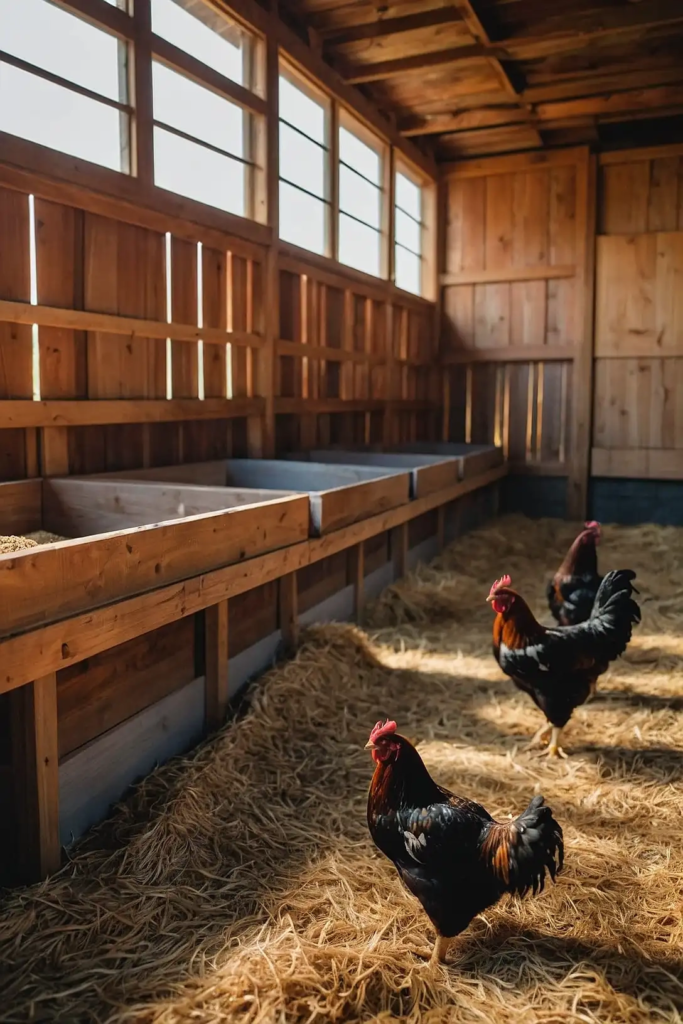
Incorporate a dedicated dust bathing area inside the coop for year-round parasite control.
This thoughtful addition allows natural cleaning behavior regardless of weather conditions outside the coop.
Fill the station with a mixture of fine sand, wood ash, and diatomaceous earth.
Create a sunken box with short walls to contain the material while making it accessible for chickens to use instinctively.
8: Automatic Pop Door Timer
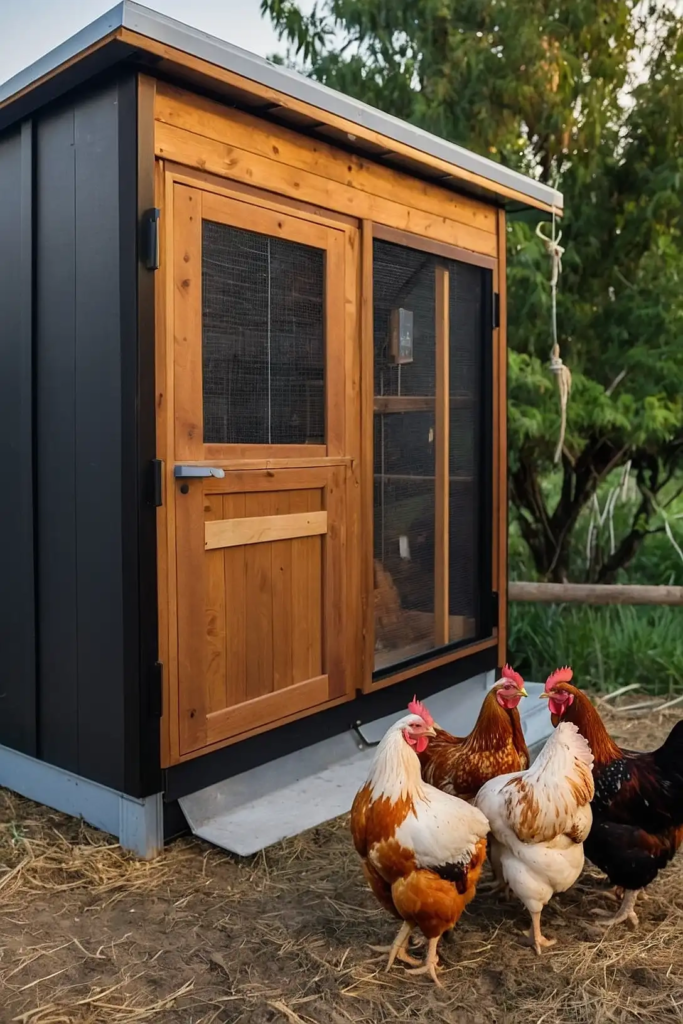
Install an automatic door that opens at dawn and closes at dusk to protect your flock from nocturnal predators.
This convenient system works even when you’re not home to close up the coop. The reliable automation maintains a consistent schedule birds can depend on.
Choose light-sensitive or programmable timer models depending on your specific needs and budget considerations.
9: Hideaway Feed Storage
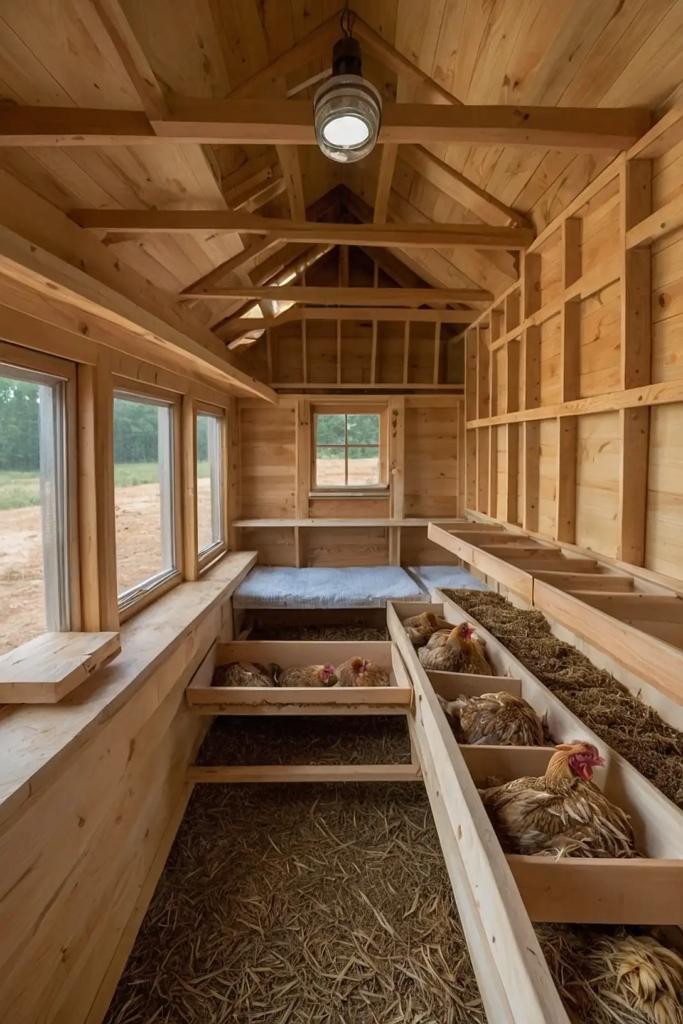
Build integrated feed storage bins inside the coop that protect food from moisture and pests.
This convenient feature keeps nutrition readily available while eliminating trips to the shed or garage. The sealed containers maintain freshness and prevent rodent access.
Design bins with easy access lids that simplify daily feeding while keeping feed protected from curious chickens and environmental factors.
10: Cross-Ventilation System
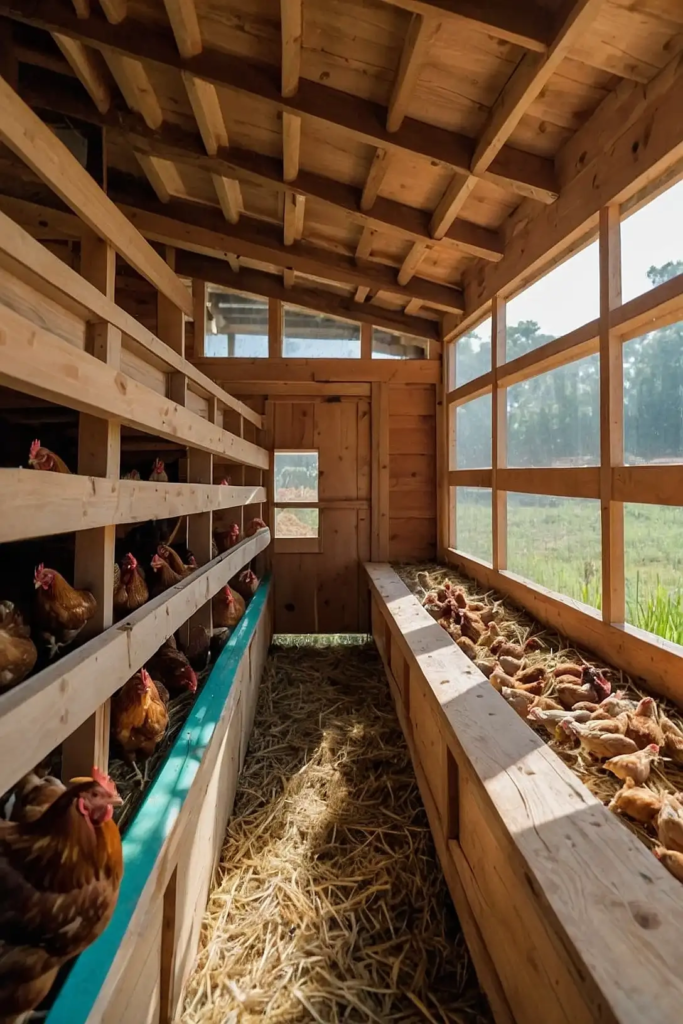
Design overlapping ventilation openings at different heights to create natural air circulation without drafts.
This thoughtful system removes ammonia fumes and excess moisture while preventing respiratory issues.
Position vents high on opposite walls to encourage air movement above roosting chickens.
Cover all openings with predator-proof hardware cloth that keeps birds safe while maintaining essential airflow.
11: Integrated Broody Box

Create a separate, secluded nesting area for setting hens to incubate eggs undisturbed.
This specialized space allows natural brooding while protecting developing eggs from other curious chickens.
Design a private compartment with limited light and access control.
Include a small dedicated food and water station so broody hens don’t need to leave eggs unattended for long periods.
12: Pull-Out Poop Board System
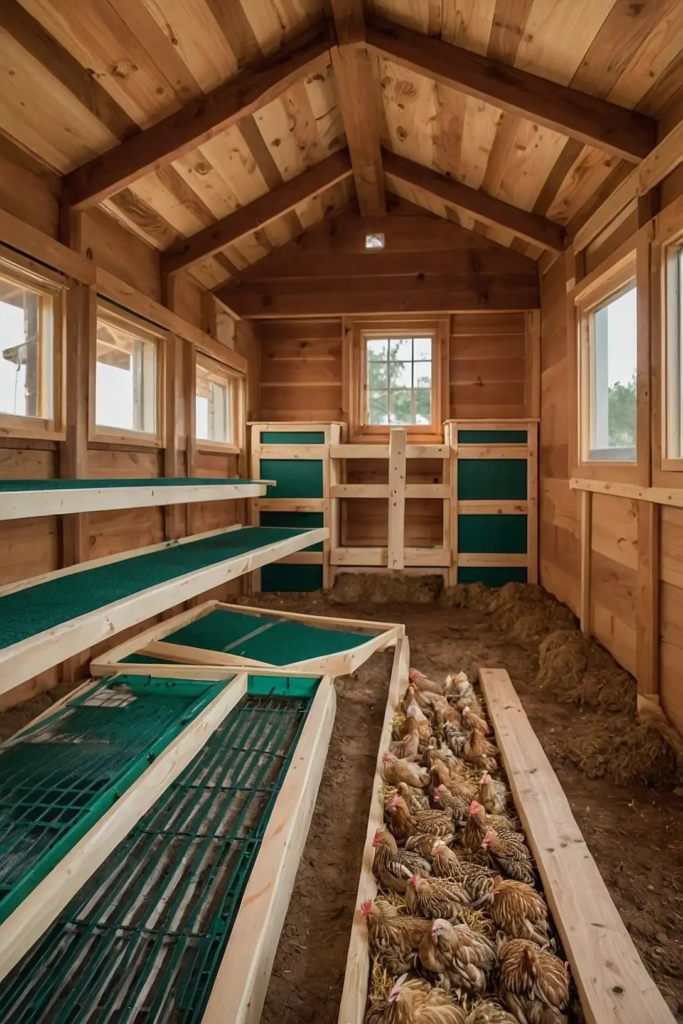
Install a slide-out platform beneath roosts for easy, daily dropping removal.
This efficient design significantly reduces coop ammonia levels and parasite issues with minimal daily effort. Cover the board with vinyl-coated shelf liner for simple cleaning.
The smooth surface allows quick scraping into a compost bucket, eliminating the need for frequent deep-cleaning sessions.
13: Greenhouse Hybrid Attachment
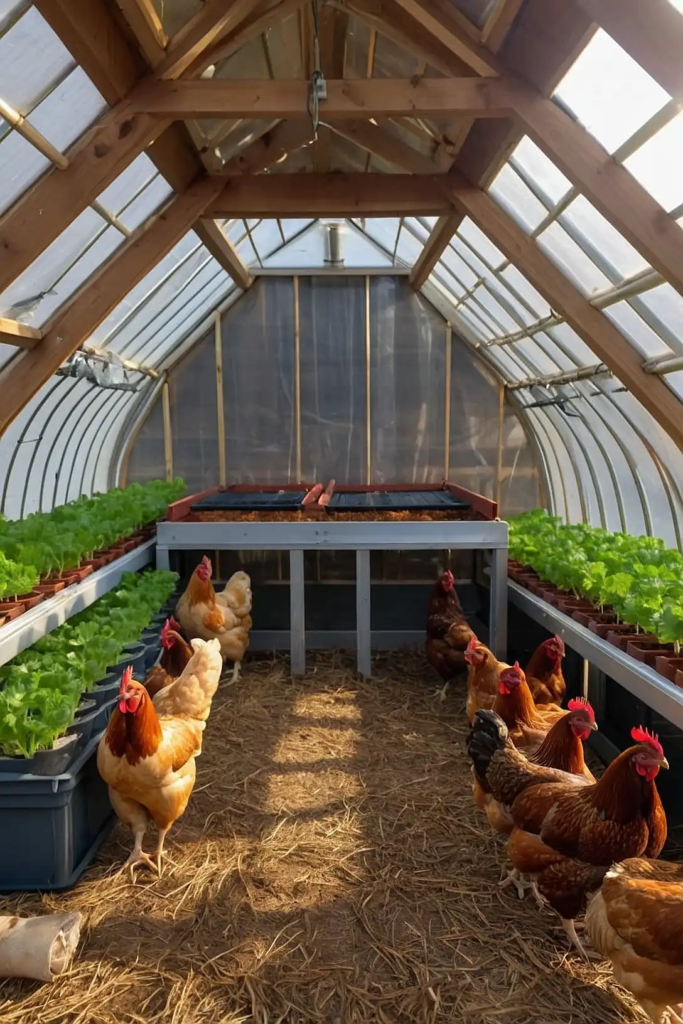
Incorporate a small greenhouse section connected to your coop for winter greens production.
This dual-purpose area provides fresh forage while creating passive solar heat for the main coop. The transparent walls maximize light during darker winter months.
Plant chicken-friendly greens like kale, Swiss chard, or wheatgrass for continual harvest without giving birds access to roots.
14: Integrated First Aid Station
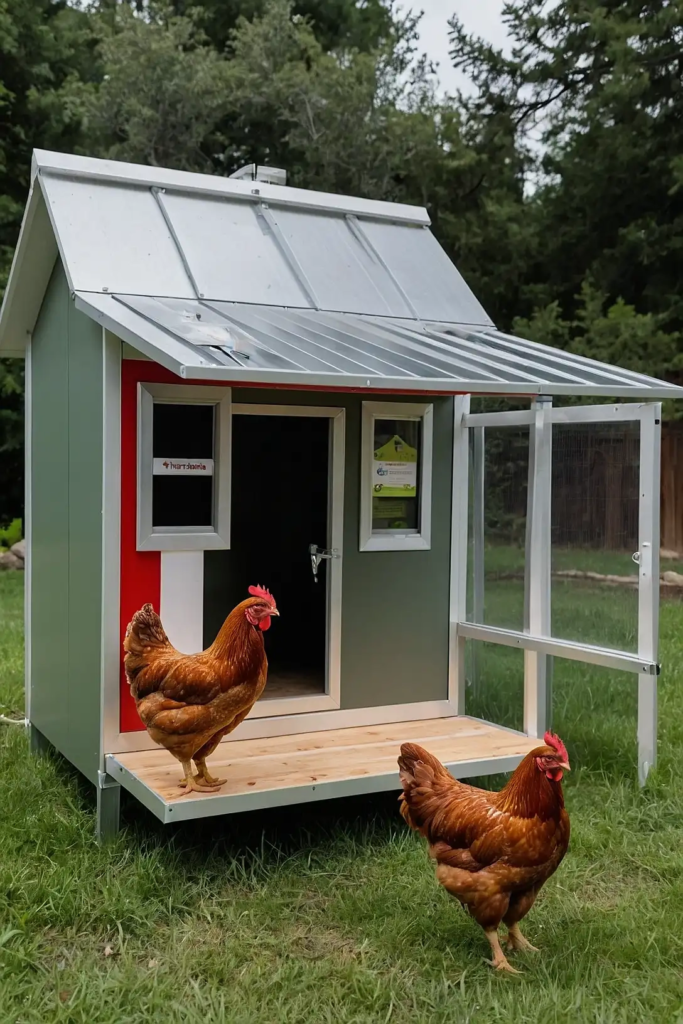
Create a designated area for injured or recuperating birds within the main coop.
This compassionate addition allows separation while maintaining flock connection to prevent reintegration issues later.
Include a small separate feeder and waterer for special nutrition needs.
Design removable dividers that provide protection while allowing visual contact that maintains the bird’s place in the pecking order.
15: Sloped Interior Surfaces

Design interior ledges, platforms, and flat surfaces with slight angles to prevent droppings accumulation.
This clever feature encourages natural runoff and significantly reduces cleaning requirements.
The subtle slopes remain comfortable for birds while easing maintenance.
Angle any horizontal surfaces at 10-15 degrees for optimal self-cleaning effect without affecting chicken comfort.
16: Under-Roost Herb Drying Rack

Install a slatted drying rack beneath roosting bars to catch droppings while drying beneficial herbs.
This dual-purpose feature combines waste management with natural parasite repellent properties.
Place bundles of lavender, mint, or other pest-deterrent herbs on the rack.
The body heat from sleeping chickens accelerates the drying process while releasing aromatic compounds that deter mites and lice.
17: Heated Water System

Create a simple thermal water station that prevents freezing in winter without expensive electricity.
This practical solution ensures constant hydration for your flock during cold months. Use a solar-powered heater or deep-litter composting heat to maintain liquid water.
Position waterers on slightly elevated platforms to prevent bedding contamination while keeping them accessible to all birds.
18: Chicken Playground Equipment

Build simple roosts and platforms at varying heights to encourage natural climbing and perching behaviors.
This enrichment design promotes exercise and reduces boredom-related issues like feather pecking.
Create a jungle-gym effect with different textures and challenges. Include ramps, ladders, and swings that provide physical and mental stimulation for curious, active birds throughout the day.
19: Egg-Roll Away Nesting System
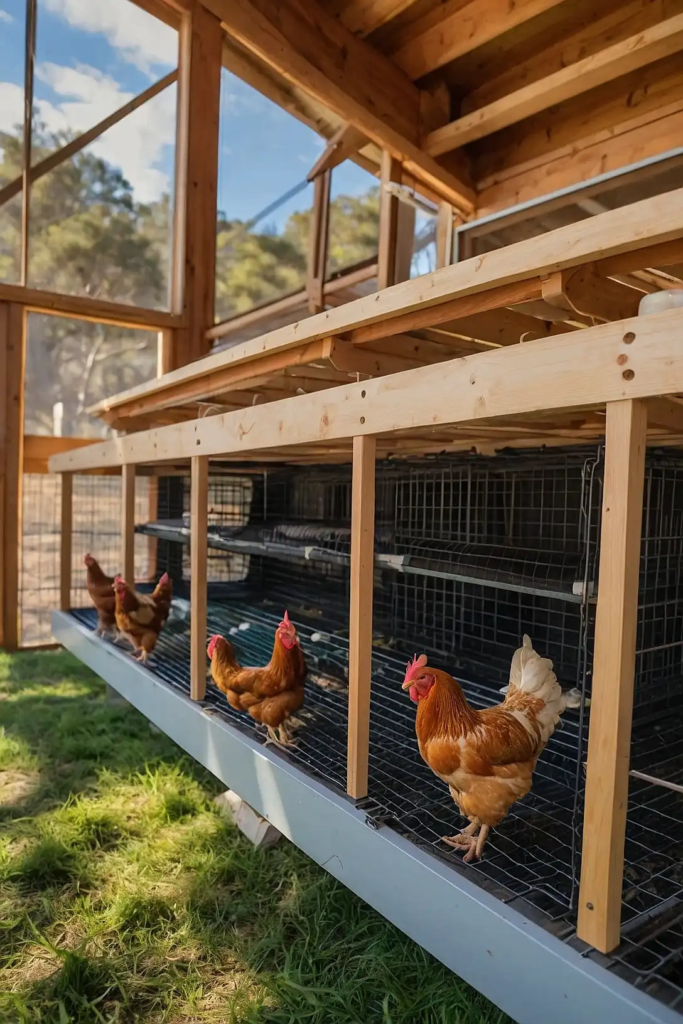
Install gently sloped nesting boxes that automatically roll freshly laid eggs into a protected collection area.
This clever design keeps eggs clean and prevents chickens from developing egg-eating habits. The safe roll prevents breakage while protecting eggs from soiling.
Add cushioned collection areas lined with soft material to prevent cracks as eggs gently roll to the gathering space.
20: Seasonal Conversion Features

Design interior elements that easily adapt between summer and winter configurations.
This versatile approach allows increased ventilation during hot months and better heat retention during cold periods.
Include removable insulation panels for seasonal adjustments.
Create summer cooling stations that convert to protected areas during winter without major coop modifications or expense.
21: Integrated Vermicomposting System
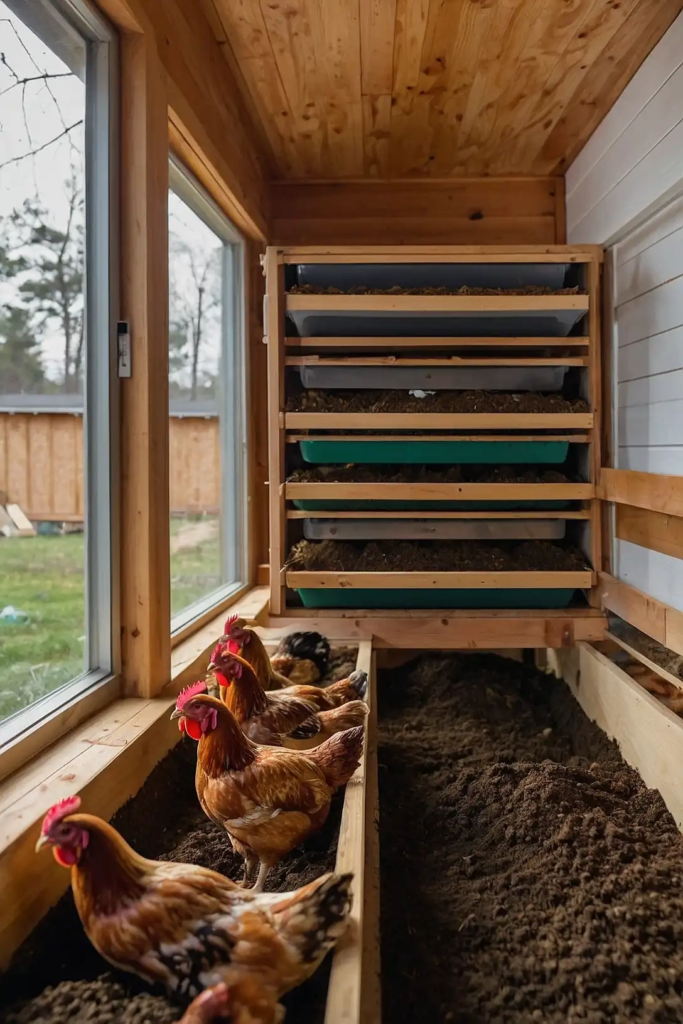
Incorporate a worm composting bin beneath the coop floor to process droppings into valuable fertilizer.
This natural system creates a continuous nutrient cycle while reducing coop waste management.
The worms break down manure into rich casting material. Design access doors that allow easy harvest of compost without disturbing either chickens or the worm ecosystem.
Conclusion
A well-designed chicken coop interior creates a healthier, more productive environment for your flock while simplifying your daily maintenance routine.
Implementing even a few of these innovative features will significantly improve both your chickens’ quality of life and your egg-collecting experience.

